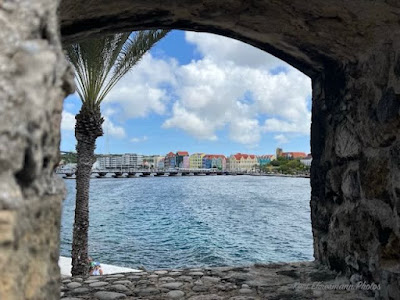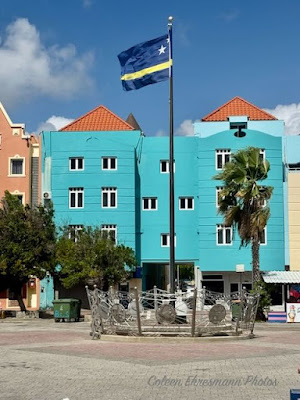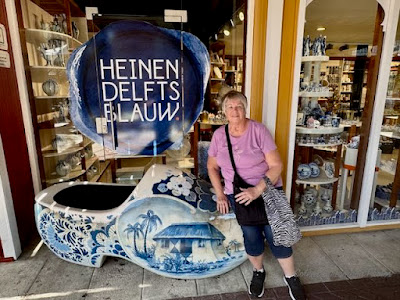Willemstad, Curacao (Netherland Antilles) was probably my favorite stop on this cruise. The colorful houses, the Dutch influence, the ease of getting around are just three of the reasons. Of course, the beautiful weather didn't hurt either!
one of many options in the port market stalls
Curacao is a liqueur flavored with the dried peel of the bitter orange variety laraha, a citrus fruit grown on the Caribbean island of Curaçao. It can be sold in numerous forms, though the most common are the orange-hued dry curaçao and blue curaçao, which is dyed bright blue. ~ Wikipedia
walls of Rif Fort
Colonial-era Willemstad was protected from marauding pirates and enemy navies with an extensive set of eight forts, six of which have survived intact into the present day. The oldest and most important is Fort Amsterdam, found at the entrance to Saint Anna Bay.
Built in 1828/1829 the Rif Fort was built between the entrance of the bay, the coast and the former Rif Water. It was built to protect the entrance of the St. Anna Bay and the outer part of the Otrabanda neighborhood.
a view from the upper level of Rif Fort
walking over the 'Swinging Old Lady"
the Queen Emma Pontoon Bridge
buildings in Punda, across the pontoon bridge
a traditional geocache find in the Fort Amsterdam area of Willemstad
we explored Punda completing an Adventure Lab for geocaching
these are some of the statues and art work on our walk-about
Queen Wilhelmina
Chichi sculpture
Chichi (tji-tji) is the loving household name for sister the eldest sister in the traditional Curacao family structure.
her backside
another Chichi
strong - proud - Caribbean
by artist Serena Israel and her team
the five stops on the Adventure Lab, exploring Otrobanda and Punda
including the floating market of fresh fruits and vegetables and handicrafts,
Dushi means babe,
and Queen Juliana Bridge built in 1967 (rebuilt 1974) which arches high over the bay
locks on the Punda Love Hearts
walking from Punda over Queen Emma to Otrobanda and Rif Fort
The flag is a blue field with a horizontal yellow stripe slightly below the midline and two white, five-pointed stars in the canton. The blue symbolises the sea and sky (the bottom and top blue sections, respectively), divided by a yellow stroke representing the bright sun which bathes the island. The two stars represent Curaçao and Klein Curaçao, with the five points on each star symbolise the five continents from which Curaçao's people descend. ~ Wikipedia
Rif Fort established in 1828, is a waterfront mall with a courtyard, stores & bars/eateries.
A shopping stop in the Delft store was a must as we headed back to the ship.
a successful shopping stop based on the shopping bag!
Tourism is Curacao's major industry.






















No comments:
Post a Comment
Thanks for your comments!